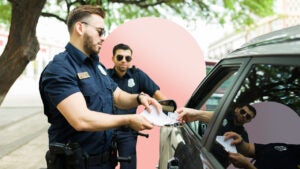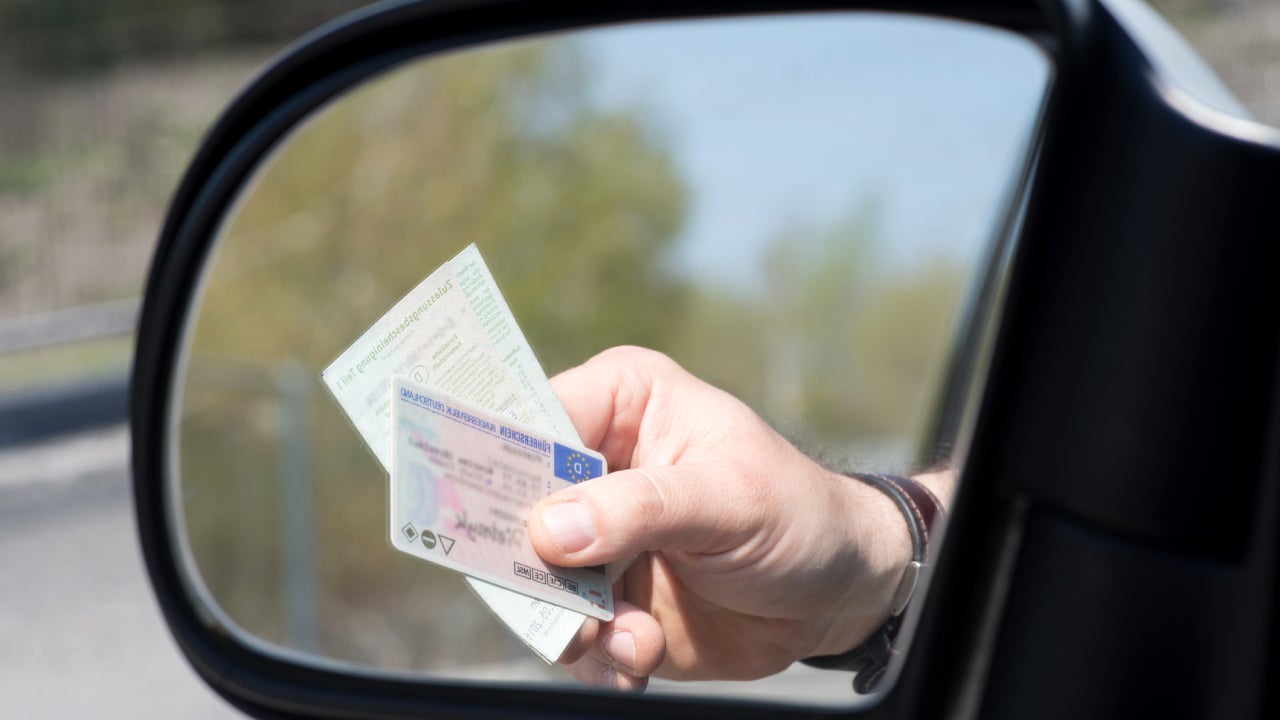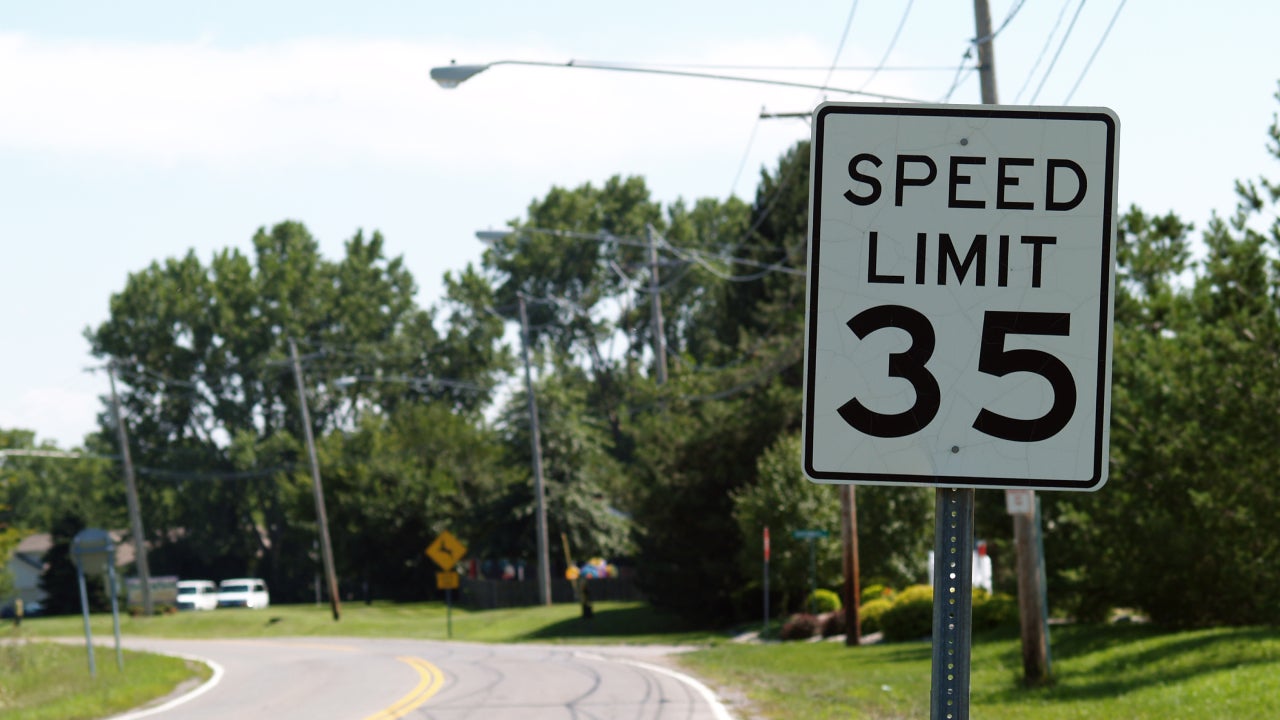Uninsured motorist statistics and facts for 2025

Finding room in the monthly budget for car insurance payments has become a headache for many Americans over the past few years. With the average cost of full coverage at $205 per month as of November 2024, affordability could be one of the reasons why there are so many uninsured drivers on the road today. In addition to being illegal in almost every state, driving without insurance increases the cost of car insurance even more for those who are insured. Bankrate compiled the most up-to-date statistics on uninsured and underinsured motorists, plus tips on how to keep yourself financially protected behind the wheel.
- About one in seven drivers, or 14%, was uninsured in 2022. (Insurance Research Council – IRC)
- This is up from 11.16% of motorists who were uninsured in 2017. (IRC)
- Washington, D.C. has the highest percentage of drivers who are uninsured at 25.2%.
- Wyoming has the lowest percentage of uninsured drivers at 5.9%. (IRC)
- In 21 states and Washington, D.C., uninsured motorist coverage is mandatory; however, some states allow drivers to reject the coverage in writing.
How many people drive without insurance?
According to the Insurance Research Council (IRC), 14 percent of drivers were uninsured in 2022. Based on AAA’s 2022 American Driving Survey, there are about 255 million drivers, which means around 35.7 million people are driving without insurance. Driving stats change each year, and studies show that uninsured driving was trending downward until it jumped from around 11 percent in 2019 to approximately 14 percent in 2020.
The peak of the recent spike in uninsured driving was in 2021 at 14.2 percent — the highest recorded amount since 2008’s 14.3 percent. While the average national rate of uninsured motorists was 14 percent as of 2019, 19 states and Washington, D.C. have uninsured motorist rates that are higher than the national average.
How do uninsured motorists impact me?
Like almost everything else, the average cost of auto insurance increased in recent years. According to data from Quadrant Information Services, the average annual cost of a full coverage car insurance policy rose 20 percent from June 2022 to June 2024. For anyone on a tighter budget, increased insurance costs could be the final straw that pushes them to drive without coverage. According to the American Association of Motor Vehicle Administrators, 82 percent of uninsured drivers either cannot afford car insurance or have a vehicle that is inoperable or unused.
Drivers who forgo insurance directly impact the cost of car insurance for everyone else. That’s because uninsured drivers still cause accidents; they just aren’t sharing in the burden of risk. Put simply, car insurance premiums are pooled together to share when an accident occurs. When people do not contribute to the pool and drive uninsured, the cost to cover accidents increases for those paying car insurance. IRC President Dale Porfilio summarizes: “The pandemic appears to have caused a jump in the percentage of drivers choosing to forgo required insurance, adding to the insurance costs for everyone else.”
What is uninsured motorist coverage?
Uninsured motorist coverage (UM) helps pay for the damage caused by another driver who doesn’t carry car insurance. UM is required by law in some states and optional in others. States often offer underinsured motorist coverage (UIM) as well, which helps pay for damages when another driver causes bodily injury but their insurance limits are insufficient.
For example, say someone driving with state minimum liability limits of 25/50 hits you and causes $40,000 in bodily injury. Their insurance would only pay $25,000, but your UIM coverage would kick in and cover the additional $15,000. Some states also offer uninsured motorist property damage coverage or UMPD, which helps pay to repair or replace your vehicle if an uninsured driver damages it.
The financial impact of UM coverage beyond car insurance
To protect yourself financially from a collision with an uninsured driver, many insurance experts recommend UM/UIM coverage. Without UM/UIM coverage, you and your passengers would need to rely on other parts of your auto policy or your health insurance for payments toward medical care from a car accident. Coverage types like personal injury protection (PIP) and medical payments (MedPay) can help cover the cost of medical expenses resulting from a car accident with an uninsured driver, but PIP usually has a deductible, and both PIP and MedPay usually have much lower limits than UM coverage.
Additionally, UM does not have a deductible. Drivers with high-deductible health insurance plans may want to pay extra attention to UM coverage and speak to their agent for advice. According to the U.S. Bureau of Labor Statistics, the average median health insurance deductible for private industry workers was $2,500 in 2023. The latest stat on the cost of UM/UIM coverage is from 2016, but the IRC shows that it is around $78 per insured vehicle. Having a detailed conversation with your insurance agent about the cost and limits of UM/UIM, PIP and medical payments can help you select the right type and level of coverage — and could save you money in the long run.
Depending on where you live, you may already carry uninsured motorist coverage as a part of your state’s minimum insurance requirements. Typically, UM coverage is equal to the amount of your bodily injury liability limits. While some states allow drivers to adjust their UM limits to be lower than their bodily injury limits, keep in mind that this coverage is for you and your passengers. Ideally, it makes sense to financially protect yourself as much as you are willing to financially protect others.
Uninsured motorists by state
From 2015 to 2019, the national average rate of uninsured drivers fluctuated by 1.2 percent at the most, and rates hovered around the 12 percent mark. However, the state-by-state data tell a different tale. Some states, like Michigan and Delaware, actually saw decreased rates of uninsured drivers over the four-year period. On the other hand, Washington, Rhode Island and Mississippi saw increases of nearly 7 percent. Below are the uninsured motorist rates by state for 2022 (the most recent year data exist), according to the Insurance Information Institute (Triple-I):
States with the most uninsured drivers:
- Washington, D.C.: 25.2 percent
- New Mexico: 24.9 percent
- Mississippi: 22.2 percent
- Tennessee: 20.9 percent
- Michigan: 19.6 percent
States with the fewest uninsured motorists:
- Wyoming: 5.9 percent
- Maine: 6.2 percent
- Idaho: 6.2 percent
- Utah: 7.3 percent
- New Hampshire: 7.8 percent
What states require uninsured/underinsured motorist coverage?
Surprisingly, many states in the U.S. do not require uninsured or underinsured motorist coverage by law. Currently, only 21 states and Washington, D.C. mandate some form of this type of auto coverage. In those that do, the required amount of coverage varies. For example, some states require bodily injury coverage; some require property damage coverage.
Although you will not be able to buy a policy that doesn’t comply with your state’s minimum car insurance laws, understanding coverage requirements can help you decide if you need to fill a gap in your policy.
How to protect yourself from uninsured motorists
You cannot control whether or not someone chooses to purchase car insurance. While that can be a daunting thought, here are some ways to financially protect yourself from uninsured motorists.
- Carry uninsured/underinsured motorist coverage: If it is not already a part of your car insurance policy, you might want to add uninsured/underinsured motorist coverage. Or, if your state requires you to carry this kind of coverage, you might want to double-check the limits of your policy. Very few states require drivers to carry uninsured/underinsured property damage coverage, and it may be worth adding.
- Consider an umbrella policy: An umbrella policy offers added liability coverage when the policy limits associated with your car insurance, home insurance or other forms of insurance are not high enough to cover the damage. Causing a car accident can mean big expenses, and having an umbrella policy may give you added peace of mind. However, you may need to verify that your umbrella policy applies to uninsured drivers, as some policies do not include coverage for this.
- Practice safe driving habits: The best way to avoid dealing with an uninsured motorist is to avoid an accident in the first place. Eliminate driving distractions and stay alert behind the wheel.
Frequently asked questions
You may also like

Penalties for driving without insurance in Kentucky

Car insurance for high-risk drivers in New York

Penalties for driving without insurance in Massachusetts



